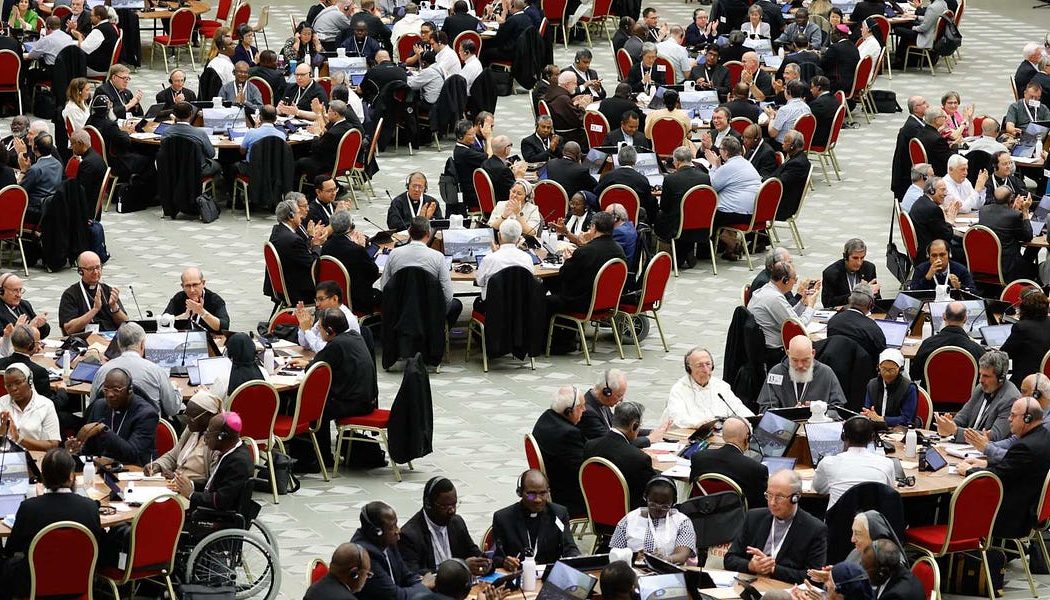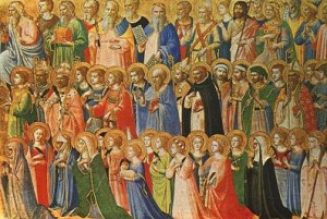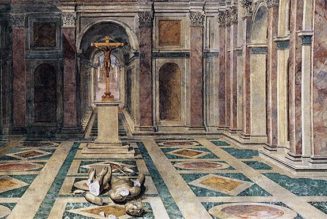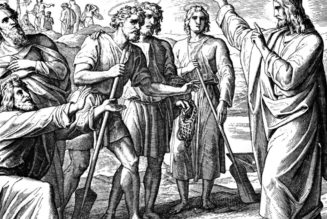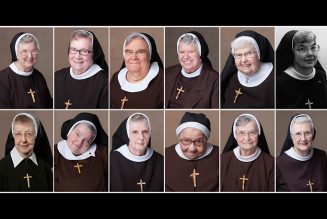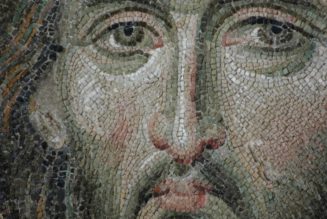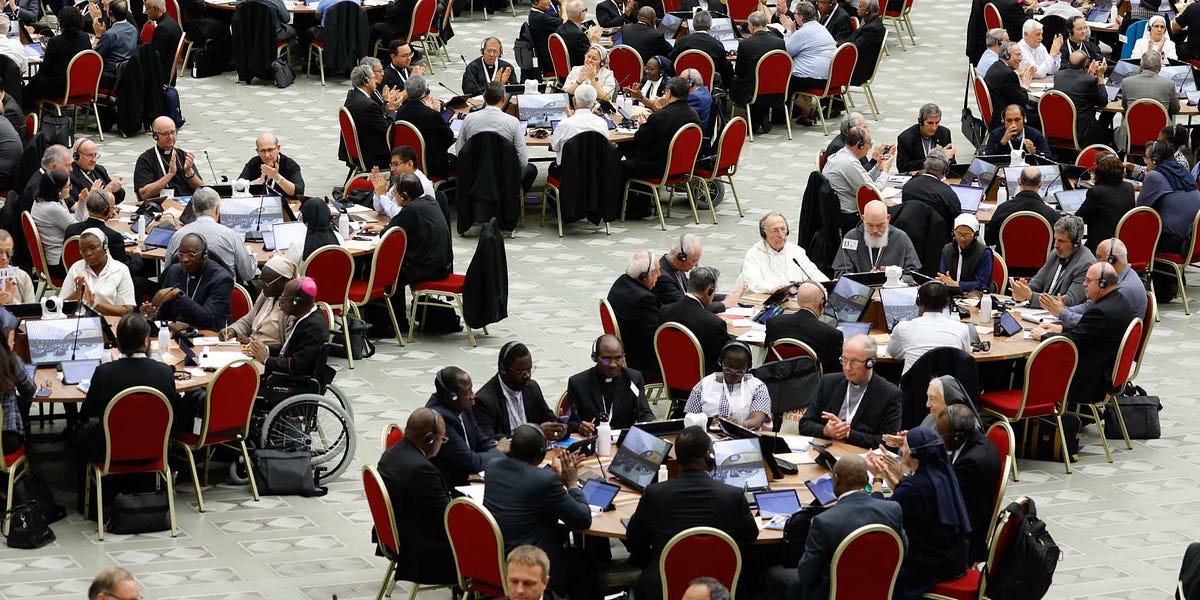
The Cambridge historian Richard Rex has noted that the first great crisis in Christianity was over the nature of the Trinity, especially over the nature of Christ, hence the early Christological heresies. The second great crisis, associated with the Reformation, was over the nature of the Church. This entailed the Protestant attack on sacramentality and the sacred hierarchy. The third great crisis, Rex observes, the one we are enduring today, is over the nature of the human person. Here the concrete issues revolve around the fact of sexual difference. Does the difference between masculinity and femininity have any theological significance?
This overview of the history of ecclesial crises is very perceptive but one might add that within the Catholic Church today the crisis is not confined to matters of anthropology. Rather a perfect storm has been building across the various branches of theology. In some cases, the crisis has been created because elements of the Catholic intellectual tradition that should exist in a symbiotic relationship have been de-coupled from one another and left in a kind of free-floating state. For example, moral theology has been de-coupled from dogmatic theology. Quite simply, the field of fundamental theology that undergirds all other branches of Catholic theology has been an intellectual battle zone for the past half century. There is no common agreement within the Catholic theological academies over such “building blocks” as the relationship between nature and grace, faith and reason, history and ontology, scripture and tradition, and the principles that ought to govern scriptural exegesis. Not only are the relationships a subject of academic debate, but the individual concepts themselves are not understood in the same way across the world of Catholic scholarship. There is, for example, no common agreement about key concepts like “grace,” “sacrament,” “tradition,” and even “priesthood.” Notions like the understanding of a priest as “alter Christus” (another Christ) are accepted by some but rejected by others. Some scholars believe that priesthood entails an ontological change in the recipient of the sacrament while others believe this idea is medieval nonsense. Some scholars read the Scriptures through the lens of contemporary social theories such as Critical Theory or a wide variety of Feminist theories, while others accept the teaching in The Interpretation of the Bible in the Church (1993), a publication of the Pontifical Biblical Commission, that is expressly critical of the employment of Marxist and Feminist social theories.
Amidst so much dissension Pope Francis has fostered a series of synods where proponents of alternative theological visions and fundamental principles can present their cases. While there have been many synods over the course of the centuries, in the past those invited to attend synods have been bishops and scholars with some academic authority in the field under discussion. The contemporary form of synods however includes members of the laity who are hostile to magisterial teachings. For some, simply being on the Church’s payroll is a sufficient criterion for inclusion in the meetings. This is unprecedented and it has occurred notwithstanding the fact that two documents of the International Theological Commission—Sensus Fidei in the Life of the Church (2014) and Synodality in the Life and Mission of the Church (2018)—have offered lists of criteria that need to be satisfied before any member of the laity could be thought to possess the sensus fidei (sense of the faith). In both lists fidelity to magisterial teaching is a necessary criterion. This is because the Church is something completely different from a debating society. In the words of Hans Maier there is an analogy between what constitutional lawyers call a bloc incontestables (a block of incontestable ideas or propositions), that set the boundaries for any debate about constitutional law, and what theologians call the deposit of the faith or teachings of Jesus Christ, that set the boundaries for theological discussions. Never before in ecclesial history have individuals been invited to offer their opinions based on nothing more reliable than their feelings and never before have mere feelings (marketed as the promptings of the Holy Spirit) been allowed to trump scripture and tradition.
A significant sociological development over the past half century has been the employment of lay Catholics in Church agencies, schools, universities, and hospitals. As vocations to religious life plummeted after the 1960s, a new generation of lay Catholics took the place of religious in the management of ecclesial institutions. At the same time many such institutions began to receive funding from secular governments. The country where this development is most pronounced is Germany. The statistics from 2022 show that the Catholic Church in Germany employs approximately 650,000 people. 150,000 work directly in the Church in pastoral work positions and administration, and this includes clergy. Some 500,000 work in other ecclesial institutions such as schools and hospitals. The Catholic Church in Germany has approximately 22 million believers, of which approximately 1.2 million attend services on Sundays (sometimes in the form of a prayer service when there is no priest). The Frankfurter Allgemeine Zeitung recently reported a survey conducted among Catholics and Evangelical Protestants. In both denominations, the percentage of people who believe that “God revealed himself in the person of Jesus of Nazareth” is approximately 30%. However, in both denominations, the blessing of homosexual couples is accepted or supported by approximately 85%. Another fact is that in 2022 a record 522,821 Catholics formally left the Church in Germany.
The German Synodale Weg (Synodal Path) was an epiphenomenal manifestation of this state of affairs. While hundreds of thousands of people are employed by the Church in Germany because of government funding through the “Kirchensteuer” system of taxation, their employment is in no way synonymous with Catholic belief and practice. A significant proposition of Germans identifying as “Catholics” have trouble affirming a belief in the divinity of Christ, let alone the many other less-central elements in the Catholic intellectual tradition. It is difficult to understand how inviting such people to national talk-fests will do anything to resolve what is fundamentally a crisis in faith and belief.
One explanation for the spiritual disaster that is Catholic Germany is that the immediate post-World War II generation needed a narrative to explain how the Nazi regime could have survived for over a decade and how the Holocaust could have occurred at the hands of German officers. The narrative that many accepted, especially in the immediate post-war generation, was provided by the Critical Theory of the Frankfurt School that was hostile to concepts like objective truth and social hierarchy. When Critical Theory is applied to an analysis of ecclesial governance, it fosters the deconstruction of the sacred hierarchy. It “de-mythologizes” the papacy, the priesthood, and the episcopacy and promotes a democratization of the Church in the direction of congregationalism. These ideas were not only popular in Germany, but in the Netherlands and Belgium as well. They have also spread to other countries through the channel of graduates of theology academies in Germany, the Netherlands and Belgium, especially Germany and Belgium. It is a historical fact that every single intellectual leader of the liberation theology movement (regarded as a quintessentially Latin American movement), obtained his doctorate from European (mostly German and Belgium) universities. Quite simply, liberation theology was “made in Germany”!
Another German phenomenon is the influence of Immanuel Kant. Kant wanted to separate theology from philosophy, marginalize the theology thus separated, and then defend the Christian moral tradition by reference to reason alone, uncontaminated by theological principles. This led to what German-speaking theologians call “moralism”—a presentation of the Christian faith as a moral code. While it is true that the Catholic faith includes a place for moral theology, moral theology is not the end or purpose of the Christian life. The end or purpose of Christian life is participation in the life and love of the Holy Trinity. The Catholic “moral code,” so to speak, is one element in the means to achieve this—it is a means, not an end.
The research of the sociologist Julie Pagis on the leaders of the student protest movements in 1968 concludes that many of these students who became Marxists were brought up in Christian families. Significantly, the hallmark of such families was that Christianity was presented to the children as a moral code. One might say that the student rebels were brought up on a Kantian kind of Christianity even if they were baptized Catholics. Once they arrived at university they retained the desire to be moral people, but preferred the morality of Marxism, with its emphasis on liberating “victims of social oppression” to the morality of the Church. The availability of the contraceptive pill lured the generation of 1968 away from Christian moral theology.
One result was that many middle-class Catholics absorbed elements of Marxist social theory into their intellectual frameworks while ignoring the teaching of the Church on matters pertaining to sexual morality. This development was a central theme of the works of the Italian philosopher Augusto del Noce. Del Noce understood that the Marxism of the “New Left,” typified by people like Antonio Gramsci and the social theorists of the Frankfurt School, “reaches a much deeper form of irreligiosity than [a simple] atheistic negation, and in this form it allies itself with the bourgeois-secular spirit pushed to its final conclusion.” In short, del Noce’s insight was that contemporary liberal Catholicism is built upon an alliance of the bourgeois-secular spirit, especially the interest in upward social mobility, with forms of New Left Marxism. It is logical, therefore, that attacks on the tradition of moral theology, and especially the moral theology of St. John Paul II, from scholars (predominately clerics) who identify themselves as “Catholic,” almost always take the form of an appeal to the social sciences and a corresponding diminution of the authority of Sacred Scripture.
This influence of the alliance of the bourgeois-secular spirit with currents of New Left Marxism within Catholic academies and within Catholic families and Catholic agencies has led African Catholic leaders to lament the fact that first-world Catholics (Catholics in Western Europe and the Anglo-sphere) have become syncretist. In other words, legitimate elements of the Catholic faith have become entangled with a cocktail of intellectual ideas absorbed from hostile traditions. This syncretism, which represents a form of idolatry, is a significant cause of the dismally low rates of participation in the sacramental life of the Church and the equally dismally low numbers of youth entering the priesthood and religious life in the first-world countries. The general African attitude is “by their fruits you shall know them” and the crops, so to speak, in places like Germany and Belgium, are almost complete failures. There is something sterile about liberal German Catholicism.
Another way to look at the problem is to say that the archetypically German syncretism aligns itself, consciously or unconsciously, to a form of humanism described by Gottlieb Söhngen as a humanism contra crucum—a humanism that avoids asceticism and is wary of self-sacrificial love—a humanism that wants to steer clear of the cross. The essay in this collection that was delivered to celebrate the anniversary of the foundation of the Passionist Order addresses this issue.
Lest I stand accused of being unfair to the German Catholics, it should be clear that I regard Joseph Ratzinger and other Germans in his intellectual circle, such as the above-mentioned Gottlieb Söhngen, as Church doctors who offered an accurate diagnosis of the spiritual pathologies underlying the contemporary crisis. In so many ways Ratzinger found himself in the epicentre of the storm of contemporary fundamental theology. His occasional addresses, homilies, and essays can be pieced together to create both a pathology report on the implosion of the Catholic faith in Europe and a road map out of the labyrinth created by a couple of centuries of German attempts to improve human life without recourse to God.
In a homily delivered in 1959 a young Fr. Joseph Ratzinger described the first Christmas day as the “winter solstice of world history.” Christ is something more than another moral teacher or celebrity philanthropist and his Church—including the priesthood, the Petrine Office, and the episcopacy—is a sacred institution, not another multinational welfare agency. To quote from §766 of the Catechism of the Catholic Church, itself an echo of Lumen Gentium §3:
The Church is born primarily of Christ’s total self-giving for our salvation, anticipated in the institution of the Eucharist and fulfilled on the Cross. “The origin and growth of the Church are symbolized by the blood and water which flowed from the open side of the crucified Jesus”. “For it was from the side of Christ as he slept the sleep of death upon the cross that there came forth the ‘wondrous sacrament of the whole Church’”. As Eve was formed from the sleeping Adam’s side, so the Church was born from the pierced heart of Christ hanging dead on the cross.
So, what do we need now?
Well first, we need to fight on sacramental ground. We need to put our faith in prayer and the sacraments.
Second, we need to be critical of the concept of the Church as primarily a philanthropic institution.
Third, we need to avoid the trap of thinking of the Catholic faith as merely a moral framework. Yes, it does have a moral framework, but this framework is an infrastructural support for our relationship to the Blessed Trinity, which is the primary thing about being a Christian.
Fourth, we need to start asking questions about whether synods are just like debating clubs where people can promote any idea that suits them or whether the faith itself is something that has already been given to us and can only be received and handed on, not constantly reconstructed. The question is, in other words, whether there are some teachings that are simply not able to be rejected because they are part of the very deposit of the faith.
Fifth, while new historical situations can raise new challenges for the practice of the faith and can give rise to the development of magisterial teaching, such as, for example, the arrival of the contraceptive pill gave rise to St. John Paul II’s catechesis on human love, the truth itself does not change. As Joseph Ratzinger said in his Principles of Catholic Theology:
The seat of all faith is, then, the memoria Ecclesiae, the memory of the Church, the Church as memory. It exists through all ages, waxing and waning but never ceasing to be the common situs of faith…there can be a waxing or waning, a forgetting or remembering, but no recasting of truth in time.
Tracey Rowland holds the St. John Paul II Chair of Theology at the University of Notre Dame (Australia). In 2020 she won the Ratzinger Prize for Theology and in 2023 she was appointed to the Pontifical Academy of the Social Sciences. This substack contribution is an extract from her preface to her latest book: Unconformed to the Age: Essays on Ecclesiology (Steubenville: Emmaus Academic, 2024).
